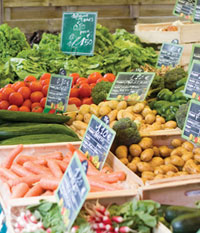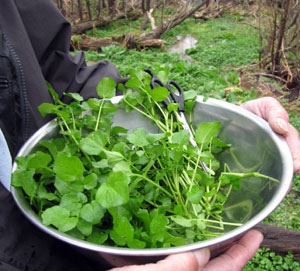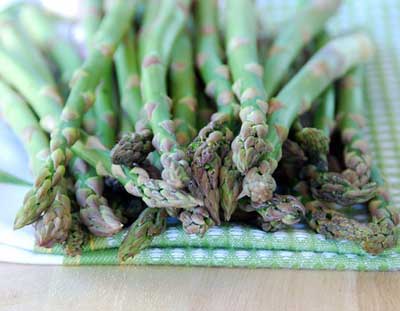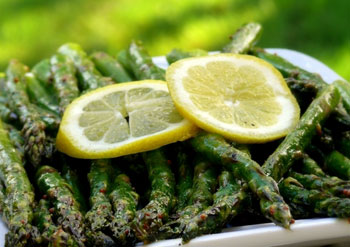 Sustainable. Local. Organic. They've become culinary buzz words. They've caused confusion. What does it all mean? Russ Parsons says there is not even a definition for sustainability. He also cautions that organic is not necessarily synonymous with small farming. He suggests visiting a conventional farm to see what they're doing.
Sustainable. Local. Organic. They've become culinary buzz words. They've caused confusion. What does it all mean? Russ Parsons says there is not even a definition for sustainability. He also cautions that organic is not necessarily synonymous with small farming. He suggests visiting a conventional farm to see what they're doing.
Basically, all the buzz boils down to just eating good food. Good food is the stuff you'll find around the outside perimeter of your supermarket -- fresh fruits and vegetables, whole grain breads, fish, meat, milk, butter. It's the great food we find at the farmers' market, grown on small farms by people who care about protecting the earth and protecting the health of humans who will eat the food they grow.

 Sneaking around is so much fun. Like heisting those leeks a few weeks ago, we had the best time on Friday clandestinely gathering wild watercress from a fresh-water stream deep in the woods. Scissors in hand, we scurried down a path of pine needles, all the while looking over our shoulders, hoping no one would see us through the mist and fog and tangled brush.
Sneaking around is so much fun. Like heisting those leeks a few weeks ago, we had the best time on Friday clandestinely gathering wild watercress from a fresh-water stream deep in the woods. Scissors in hand, we scurried down a path of pine needles, all the while looking over our shoulders, hoping no one would see us through the mist and fog and tangled brush. It's May 12th, and asparagus season is nearly over here in Southern California. While the majority of the country enjoys asparagus from April to June, our season usually stretches from late February to early May.
It's May 12th, and asparagus season is nearly over here in Southern California. While the majority of the country enjoys asparagus from April to June, our season usually stretches from late February to early May. Side dishes are the key to making every meal a hit. They are essentially the glue that holds dinner
together. Roasted asparagus is by far Spring's quintessential veggie and this mustard-dill vinaigrette
just takes it up a notch! Now, having said that, asparagus can be the quintessential enemy of wine.
Side dishes are the key to making every meal a hit. They are essentially the glue that holds dinner
together. Roasted asparagus is by far Spring's quintessential veggie and this mustard-dill vinaigrette
just takes it up a notch! Now, having said that, asparagus can be the quintessential enemy of wine.
 There’s no place like Hollywood for star-gazing …
There’s no place like Hollywood for star-gazing …
